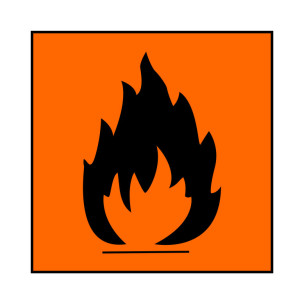The Silver Trail Fire Raises Questions Of Equipment And Training Quality
By Richard Thomas
While at Scotland’s Spirit of Speyside whisky festival earlier this month, I had the opportunity to visit Strathisla, billed as Scotland’s oldest distillery. It certainly looked the part, roughly the same size as some of America’s bigger craft distilleries and with an appearance comparable to a brewery from Inspector Morse, the 1980s British detective show.
The distillery is so old, in fact, that photography is banned and visitors are required to put away their mobile phones for the duration. The reason for that is fear that a dropped gadget might ignite a spark in the battery, and ventilation in the aged buildings is bad enough to prompt fears of highly flammable alcohol vapor collecting in the event of a leak. Others in my group scoffed, but this having been just a week after the tragic Silver Trail Distillery fire in Western Kentucky, the risks seemed real enough and the precautions justifiable enough to me.
Hazardous Handiwork?
Saying that the craft distilling scene in America has grown by leaps and bounds in the last few years is both cliched and understated. The American Distilling Institute (ADI) and the Distilled Spirits Council of The United States told me last year that there were between 700 and 800 small distilleries either in operation or in the works, many times more than what was around a decade before.
That tidal wave points to the real supply and demand crisis in the spirits world, and it isn’t for straight bourbon whiskey. Instead, it is for copper stills. The two major manufacturers who do the copper fabrication for the bulk of the bourbon, scotch and Irish whiskey industries, Vendome in Louisville, Kentucky and Forsyth’s in Scotland, both have backlogs of work orders of two to three years. Even after many of the new whiskey companies around the world turned to copper fabricators with distillation experience in Germany, Italy, Portugal and Spain, there was still plenty of demand left over, especially in America, to give rise to several new still-making companies.
The problem is that building a liquor still is painstaking and demanding work. The exacting engineering aside, copper welding is a particularly difficult skill to master. Mike Sherman of Vendome once explained to me how steel welding experience just doesn’t carry over, and when they find someone with a knack for copper welding, Vendome goes the extra mile to keep that worker.
Although the report of the Kentucky State Fire Marshall on the Silver Trail explosion isn’t in yet, it appears possible that a 300-gallon still made by Revenoor in Oregon failed. The company has reportedly shut down its website (although their Facebook page is still active), disconnected its telephone number and is filing for bankruptcy, while Silver Trail owner Spencer Balentine and Jay Rogers, the 2nd distiller who was injured in the explosion and who lost his son Kyle in it, are suing them.
Whether Revenoor’s equipment failed remains to be seen, but what is beyond doubt is that an appreciable chunk of the distilling equipment on the market today is mediocre. Complaints about inferior workmanship are common in home distilling circles, and this has even served as part of the motivation for some individuals to start their own still-making companies. “I had a couple of stills that I had bought off E-Bay,” said Mike Haney, owner of Hillbilly Stills, “and to honest they were just junk. Very poor workmanship and productivity. I decided I could build a better still.”
Gear And The Skills To Operate It
If at least some of the people making stills lack proper skills and experience, the same applies to some of the new entrants into craft distilling. In my experience, many if not most of the people getting into craft distilling come not from brewing, chemistry or engineering backgrounds, but from white collar jobs in law, finance or marketing. Some of these people take classes in distilling or apprentice with operational distilleries, but some of them don’t.
Even when the machinery is sound and the people competent, accidents happen. A deficit in either increases the risks, and alcohol vapor is dangerous stuff. With so many new faces in the still-making, copper fabrication business and so many new start-ups in distilling, the odds are that at least a few people in both groups don’t really know what they are doing.
This realization of both who is making some of these stills as well as who is operating them begs the question of just how many have safe equipment and how many are capable of safely operating it, much less identify potentially dangerous problems in their gear. I would never have picked Silver Trail Distillery as a likely candidate for such a tragic accident, but that only underscores the point. With more and more craft distilleries opening each month in America, it might only be a matter of time before we see another fiery still house explosion.
 The Whiskey Reviewer A World of Whiskey, Poured Every Weekday
The Whiskey Reviewer A World of Whiskey, Poured Every Weekday

